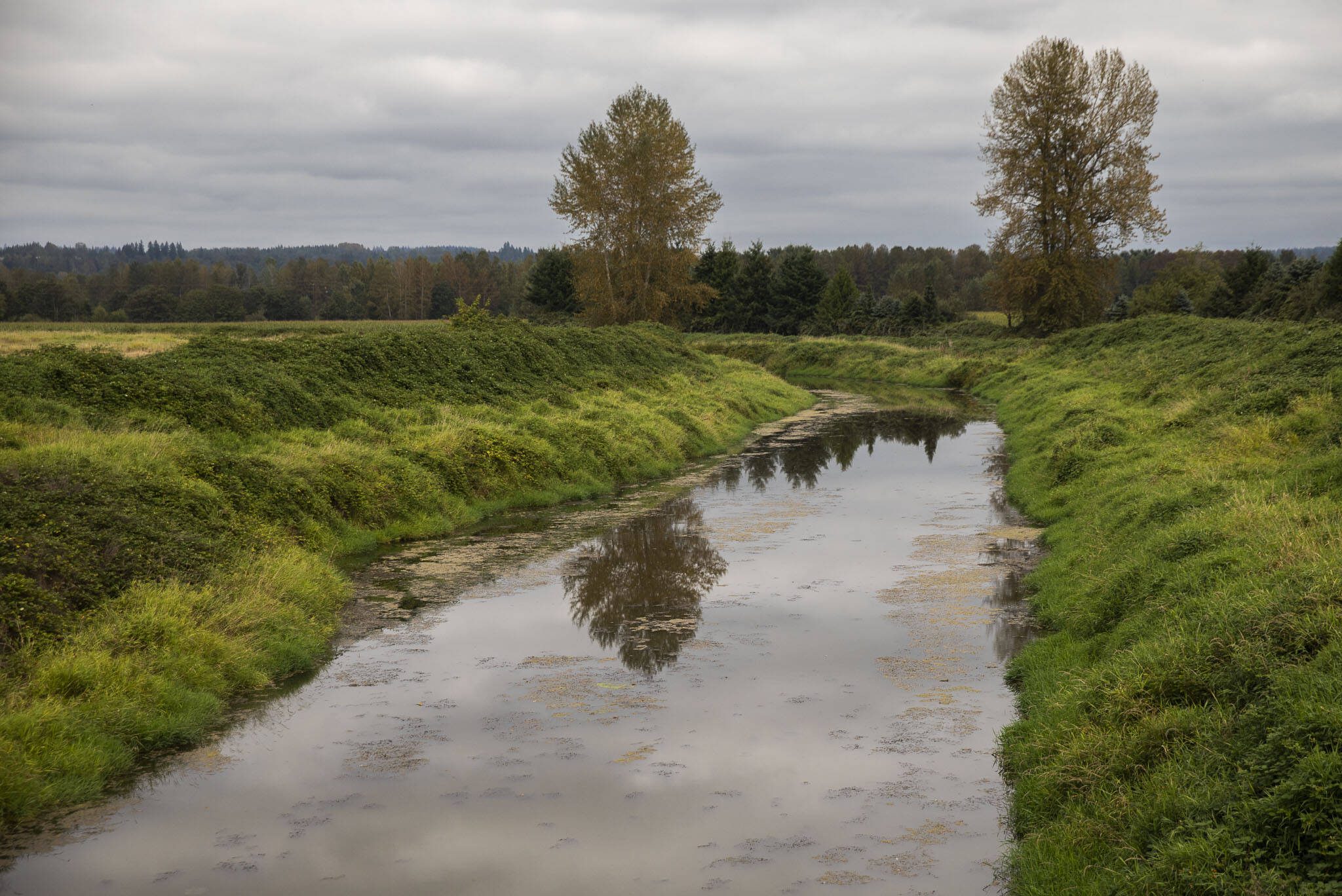SNOHOMISH — French Creek is not a stream for swimming.
The creek, calm and quiet, burbles slowly through lush forests and farmland southeast of Snohomish, but its murky depths are less than inviting.
Its color doesn’t help.
For many years, locals have watched the Snohomish River tributary periodically turn a rusty orange.
Ryan Bartelheimer grew up on a nearby dairy farm. Now, he’s an engineer for the Snohomish Conservation District.
“Some times of the year it’s more brown, other times of the year it’s more orange, but it’s always had less than crystal clear-looking water,” Ryan Bartelheimer said.
He, along with many other locals, have long attributed the shift to organic discharge.
However, a study published last month by the state Department of Ecology found evidence that points to blue-green algae as another potential culprit. This algae sometimes produces toxins that can damage humans and wildlife, and orange pigments that likely contribute to the water’s unnatural hue.
Researchers said they don’t have enough information yet to know if French Creek has unsafe levels of toxicity.
“The most important point is to focus on the little things that we all can do to improve water quality in the watershed,” Department of Ecology scientist Sarah Yepez said.
She advised local landowners to plant native vegetation along the riverbank. These plants can capture excess nutrients before they reach the water, as well as provide shade that limits algal growth.
Other actions residents can take include reducing fertilizer use, limiting manure runoff and maintaining septic tanks.
‘Nothing new’
The Bartelheimers have deep roots near French Creek.
Ryan Bartelheimer’s cousin, Dan, has lived here for over 80 years, and farmed on the land for 50.
For as long as they can remember, the water has turned orange periodically.
“That’s nothing new. It’s been going on for years,” Dan Bartelheimer said. “I don’t think anybody’s been really that concerned about it until the last 20 to 30 years.”
He doesn’t see the phenomenon changing anytime soon.
“I don’t think it can be resolved,” he said. “It’s been doing that for probably 1,000 years and will continue.”
The surrounding valley is rich in organic soil and largely used for agriculture.
This rich soil often leaks tannins, a kind of contamination created when water is filtered through decaying vegetation or peaty soil. They often cause water to appear in yellow to brown shades, much like the water on French Creek.
Tannins are likely a contributor, but tests show they may not be the only factor.
‘Cause for concern’
In 2022, Ecology researchers decided to find the source.
Researchers collected water samples from upstream and downstream locations in both summer and fall. They tested everything from ammonia to chlorophyll to turbidity.
Their results show suspended organic matter and iron-rich materials likely contributed to the water’s rusty color.
Researchers also found carotenoid pigments, the same kind that give carrots their vivid orange hue, and high amounts of cyanobacteria, commonly known as “blue-green algae.”
Blue-green algae is a naturally-occurring, photosynthetic bacteria that sometimes produces orange pigments. The main species they identified is Cuspidothrix.
“Cuspidothrix is concerning because it can produce a neurotoxin, which is dangerous for animals and people who are recreating or fishing or drinking the water,” said Ecology’s Yepez.
Algal blooms have a number of causes, often stemming from high nutrient levels in the watershed from sources like agricultural runoff, stormwater runoff and wastewater treatment discharges.
“You can’t really pin it to any one sector,” Yepez said. “There are nutrients in every part of our watershed.”
Dan Bartelheimer said local farmers are conscientious about containing the runoff from their livestock.
“We try to be good stewards,” he said. “I think the farmers have been cognizant.”
It is too early to know whether the water’s toxicity is hazardous, or what the impact could be on fish and wildlife populations, Yepez said.
“Discoloration in the water would be a cause for concern,” she said. “Now we know that it can be linked to these kinds of algal blooms, so I would treat it with caution.”
‘Give it room’
Officials are taking preliminary steps to treat the tributary’s troubled waters.
The Snohomish Conservation District will implement a state-funded project to plant riverside vegetation, Ryan Bartelheimer said. They also aim to inform French Creek landowners on the issue. This is part of a 12-year plan to restore and protect the Snohomish watershed.
To keep excess nutrients out of the river, experts advise cleaning up pet waste, avoiding feeding waterfowl and washing cars at a car wash.
For now, Yepez advised locals to give the water distance.
“If you see a bloom,” she said, “give it room.”
Connor Zamora: 425-339-3037; connor.zamora@heraldnet.com; X: @cgzamora02.
Talk to us
> Give us your news tips.
> Send us a letter to the editor.
> More Herald contact information.


























